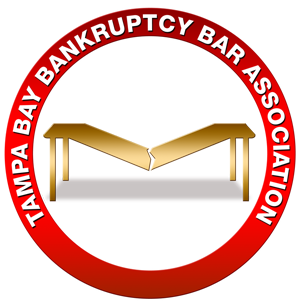By Bridget Dennis
Shutts & Bowen, LLP
In the case of In re Breland, a creditor moved to dismiss the debtor’s individual Chapter 11 case, or alternatively, to have a Chapter 11 trustee appointed. 570 B.R. 643, 661 (Bankr. S.D. Ala. 2017), aff’d, 610 B.R. 389 (S.D. Ala. 2019), rev’d, 989 F.3d 919 (11th Cir. 2021). The bankruptcy court held that under Section 1104(a)(1), cause existed to appoint a Chapter 11 trustee. Id. The debtor appealed this finding on constitutional grounds,
whereby the district court held the debtor lacked standing to raise its challenge, and the Eleventh Circuit thereafter reversed and remanded for the district court to consider
the merits of debtor’s claim. In re Breland, 989 F.3d at 920–21. The court’s holding in Breland made us consider how Section 1104’s counterpart, Section 1185, would
apply to a similar set of facts involving a Subchapter V debtor.
Section 1104 applies to Chapter 11 generally while Section 1185 applies to Subchapter V cases. Subchapter V was enacted to expedite the process for small business debtors to “reorganize quickly, inexpensively, and efficiently.” In re Seven Stars on the Hudson Corp., 618 B.R. 333, 336 (Bankr. S.D. Fla. 2020). While the mechanisms for reorganizing under Subchapter V are similar to those available under Chapter 11, Subchapter V differs from Chapter 11 in a few notable respects regarding displacement of the debtor in possession.
First, there is a temporal requirement applicable to ordinary Chapter 11 cases under Section 1104(a), which restricts the time in which the court may appoint a trustee
to before confirmation of a Chapter 11 plan. In contrast, in Subchapter V cases, Section 1183(c)(1) expands this temporal requirement and permits the court to appoint a
trustee (the Subchapter V trustee) as needed, even after plan confirmation.
Second, in Subchapter V cases, the court has additional discretion to reinstate a debtor in possession who has previously been removed from control. Pursuant to Section 1105, the court may restore a Chapter 11 debtor to operate its business only prior to confirmation of a plan. However, under Subchapter V, if the court removes a debtor in possession for cause under Section 1185(a), the debtor may be reinstated even after plan confirmation,
as there is no time limitation set out in Section 1185(b).
Third, there is a clear contrast regarding how courts will handle the removal of a Subchapter V debtor depending on whether the business is still in operation. Upon finding cause under Section 1185(a) to remove a Subchapter V debtor, courts have not hesitated to
convert a case to Chapter 7 where the debtor is no longer operating. To illustrate, in a recent Subchapter V case, a nonoperating debtor fraudulently obtained PPP loans
prior to voluntarily filing its Subchapter V case and failed to disclose such funds to the bankruptcy court. In re GMS Diner Corp., No. 20-16721 (SLM) (Bankr. D.N.J. 2020). Rather than appoint a Subchapter V trustee to take control of a non-operating business under Section 1183(b)(5), the court instead converted the case to Chapter 7 under Section 1112. Id.
As illustrated by GMS Diner, conversion may provide a superior mechanism to remove nonoperating debtors. However, one may question whether the result in GMS
Diner would be the same if the business was still in operation – most likely not. Notably, Section 721 curbs the length of time a Chapter 7 trustee is permitted to operate a debtor’s business to “a limited period” when a debtor in possession is displaced by conversion, which leads us to believe the appointment of the Subchapter V trustee is best used in operating scenarios. Consequently, it is possible to envision an alternate universe of Breland under Subchapter V where the debtor is displaced by a Subchapter V trustee for cause, and later put back in control, after confirmation of a plan
